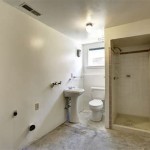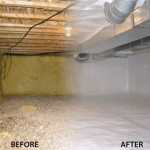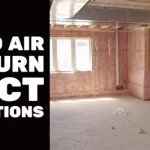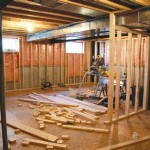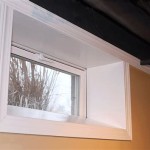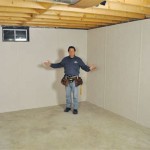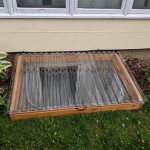What To Do If Basement Carpet Gets Wet
Discovering wet carpet in a basement is a homeowner's concern. Basements, located below ground level, are inherently susceptible to moisture intrusion from various sources, including leaks, flooding, and condensation. Addressing wet carpet promptly and effectively is crucial to prevent further damage and mitigate potential health hazards. This article outlines the steps to take if basement carpet becomes wet, focusing on damage assessment, water removal, drying procedures, and preventative measures.
Assessing the Extent of the Water Damage
The initial step in responding to wet basement carpet involves evaluating the scope and source of the water intrusion. The extent of the water damage will dictate the necessary actions and resources required for proper remediation.
First, identify the source of the water. Potential sources include:
- Leaking pipes: Examine exposed pipes for any signs of drips or corrosion. Check pipe joints and connections.
- Foundation cracks: Inspect the basement walls for cracks, especially near ground level. Water can seep through even hairline fractures.
- Sump pump failure: Ensure the sump pump is functioning correctly. If the pump is overwhelmed or malfunctioning, it can lead to standing water.
- Window wells: Check window wells for proper drainage. Clogged or improperly designed window wells can allow water to accumulate and seep into the basement.
- Appliance malfunctions: Washing machines, water heaters, and dishwashers can leak and cause water damage.
- Flooding: Heavy rainfall or overflowing waterways can flood basements.
Once the source is located, determine the area affected. Visually inspect the carpet for dampness, discoloration, or mold growth. Use a moisture meter to measure the moisture content of the carpet and subfloor. A moisture meter helps to determine how deeply the water has penetrated and can guide drying efforts. Note any areas where the carpet feels squishy or emits a musty odor, as these are indicators of significant water damage and potential mold growth.
Document the damage with photographs or videos. This documentation can be crucial for insurance claims or when consulting with professional restoration services. Document the date and time of the discovery, the source of the water, the extent of the damage, and any items that were affected. Also, note any pre-existing conditions, such as previous water damage or mold growth, as these could influence the remediation process.
Safety is paramount during assessment. If there is standing water and the possibility of electrical shock, turn off the power to the affected area by using the circuit breaker. Wear protective gear, such as gloves and a mask, to minimize exposure to potential contaminants and mold spores. Avoid contact with the water if it appears to be contaminated with sewage or chemicals.
Water Removal and Initial Drying
Prompt water removal is crucial to minimize damage and prevent mold growth. The longer the carpet remains wet, the greater the risk of structural damage and microbial contamination. Several methods can be used to remove water from basement carpets.
For large volumes of standing water, use a submersible pump to remove the bulk of the water. Submersible pumps are designed to handle large quantities of water quickly and efficiently. Place the pump in the lowest area of the basement and ensure it is securely positioned. Regularly check the pump to ensure it does not become clogged with debris.
After removing the standing water, use a wet/dry vacuum to extract as much remaining moisture as possible from the carpet and padding. Work in overlapping passes to ensure thorough water extraction. Empty the vacuum’s canister frequently to maintain suction efficiency. Repeat the process several times, focusing on areas that are particularly saturated. A wet/dry vacuum is an indispensable tool for water damage remediation.
Consider removing the carpet and padding, especially if they are severely waterlogged or have been exposed to contaminated water. Removing the carpet and padding allows for thorough drying of the subfloor and prevents mold growth beneath the carpet. If the carpet is removed, dispose of the padding, as it is difficult to dry thoroughly and can harbor mold. If the carpet is salvageable based on the water type and duration of exposure, dry it separately using fans and dehumidifiers.
To promote air circulation and accelerate drying, use fans and dehumidifiers. Position fans to blow air across the wet carpet and subfloor. Dehumidifiers help remove moisture from the air, which reduces the humidity level and facilitates evaporation. Open windows and doors, if weather permits, to allow fresh air to circulate. However, if the humidity outside is high, it is better to rely on dehumidifiers to control the moisture level. Monitor the moisture levels regularly using a moisture meter to track the drying progress.
Dispose of any items that have been contaminated by the water, such as furniture, boxes, or personal belongings. Porous materials that have been exposed to contaminated water are often difficult to clean and disinfect effectively and may pose a health risk. Properly dispose of these items according to local regulations.
Thorough Drying and Preventing Mold Growth
Complete and thorough drying is essential to prevent mold growth and further structural damage. Mold can begin to grow within 24 to 48 hours of water exposure, so rapid and effective drying is crucial. Several strategies can aid in achieving complete dryness.
Continue using fans and dehumidifiers to circulate air and remove moisture. Aim to maintain a humidity level below 50% to inhibit mold growth. Monitor the drying process closely, and adjust the positioning of fans and dehumidifiers as needed to ensure even drying across the affected area. Regularly check for any signs of remaining dampness or moisture using a moisture meter.
If the carpet and padding were removed, the subfloor must be thoroughly dried. Use fans and dehumidifiers to dry the subfloor, paying particular attention to areas where water may have pooled. Consider using a floor dryer, which is specifically designed to dry subfloors quickly and efficiently. Ensure the subfloor is clean and free of debris before reinstalling the carpet and padding. If the subfloor is concrete, it may require more time to dry completely than a wooden subfloor.
Apply an antimicrobial treatment to the affected areas to prevent mold growth. Antimicrobial treatments can help kill existing mold spores and inhibit future growth. Follow the manufacturer’s instructions carefully when applying these treatments. Ensure the area is well-ventilated during and after application. Antimicrobial treatments are available in various forms, including sprays, foams, and wipes.
Clean and disinfect any salvageable items that were exposed to the water. Use a disinfectant cleaner to thoroughly clean surfaces and remove any contaminants. Pay particular attention to items that came into direct contact with the water. For fabrics, consider professional cleaning or laundering at high temperatures to kill any mold spores or bacteria. Ensure all items are completely dry before storing them.
Inspect the area regularly for any signs of mold growth. Mold can appear as discoloration, staining, or a musty odor. If mold is detected, take immediate action to remove it. Small areas of mold growth can often be cleaned with a mixture of bleach and water. However, for larger areas of mold growth, it is advisable to consult with a professional mold remediation service. Professional mold remediation services have the expertise and equipment to safely and effectively remove mold and prevent its recurrence.
After the area is dry and clean, consider replacing the carpet and padding with mold-resistant materials. Mold-resistant carpets and padding are designed to inhibit mold growth and are a good investment for basements, which are prone to moisture. These materials are often treated with antimicrobial agents and are designed to allow for better air circulation. Properly install the new carpet and padding to ensure they are securely in place and will not trap moisture.

Common Causes Solutions For A Wet Carpet In The Basement Everdry Toledo Waterproofing Blog Latest News And Tips Basements

Wet Carpet In Basement Here S What To Do Now November 2024

7 Tips For Drying Wet Carpet Preventing Mold Growth Astrobrite Local Family Run

How To Take Care Of Water Damaged Carpets Elite Restoration

How To Dry Out Basement Carpeting Diy Family Handyman

How To Dry A Wet Fitted Basement Carpet With Little Effort Youtube

7 Tips For Drying Wet Carpet And Preventing Mold Growth To Go

Wet Carpet In Basement How To Remove It Victorious Flooring

What You Should Do After The Flood

Wet Carpet In Basement Here S What To Do Now November 2024
Related Posts
